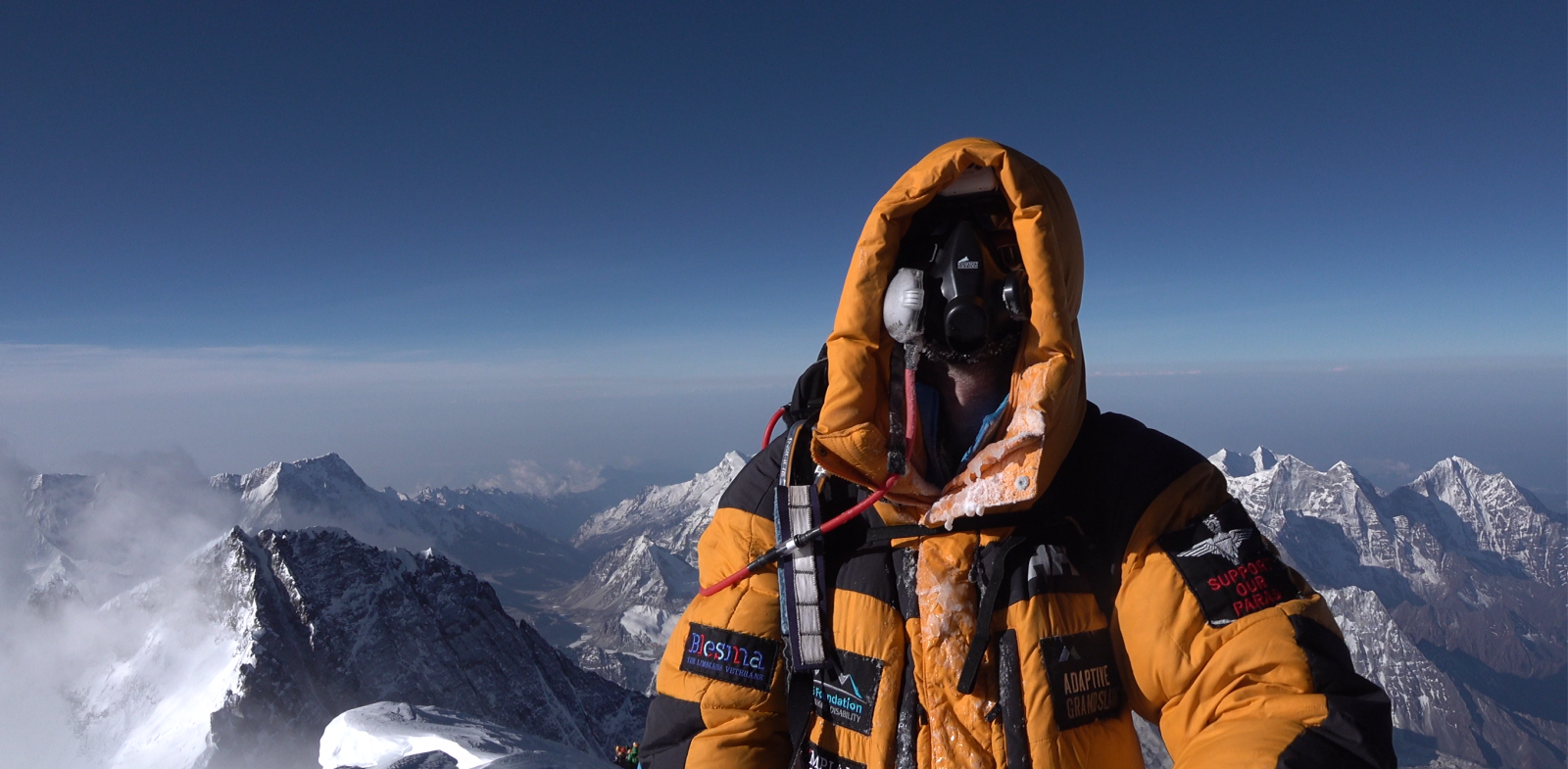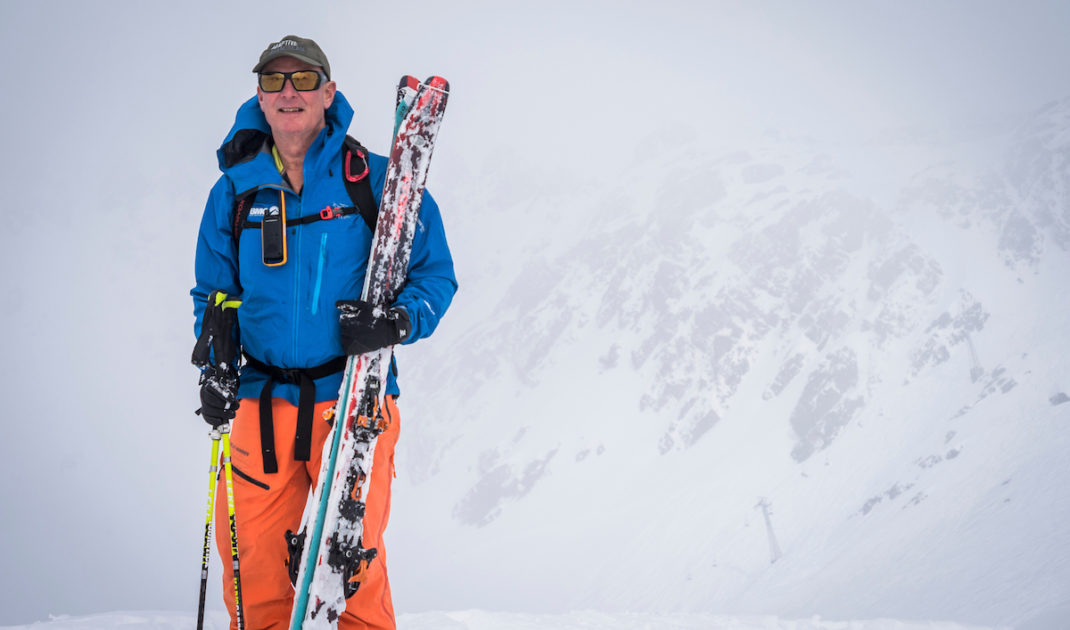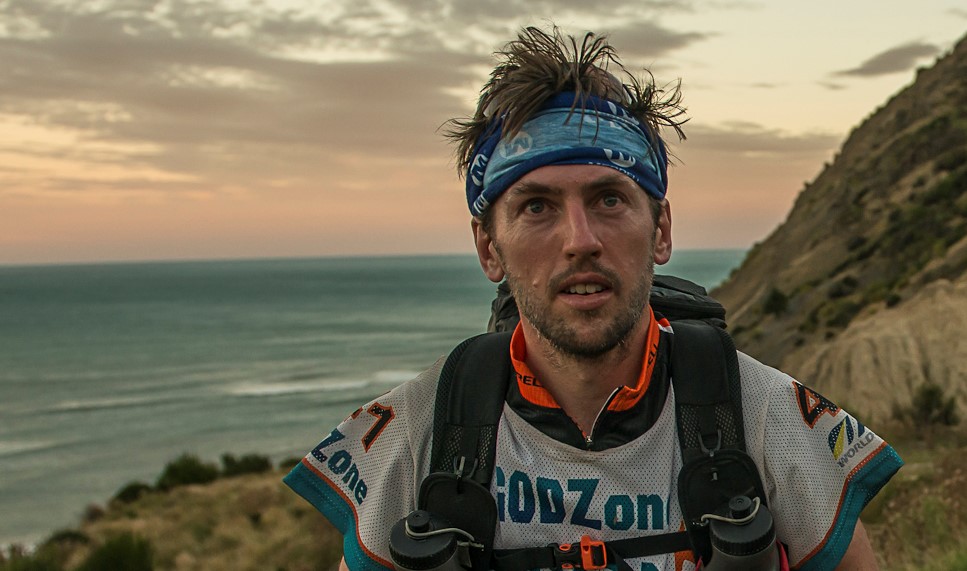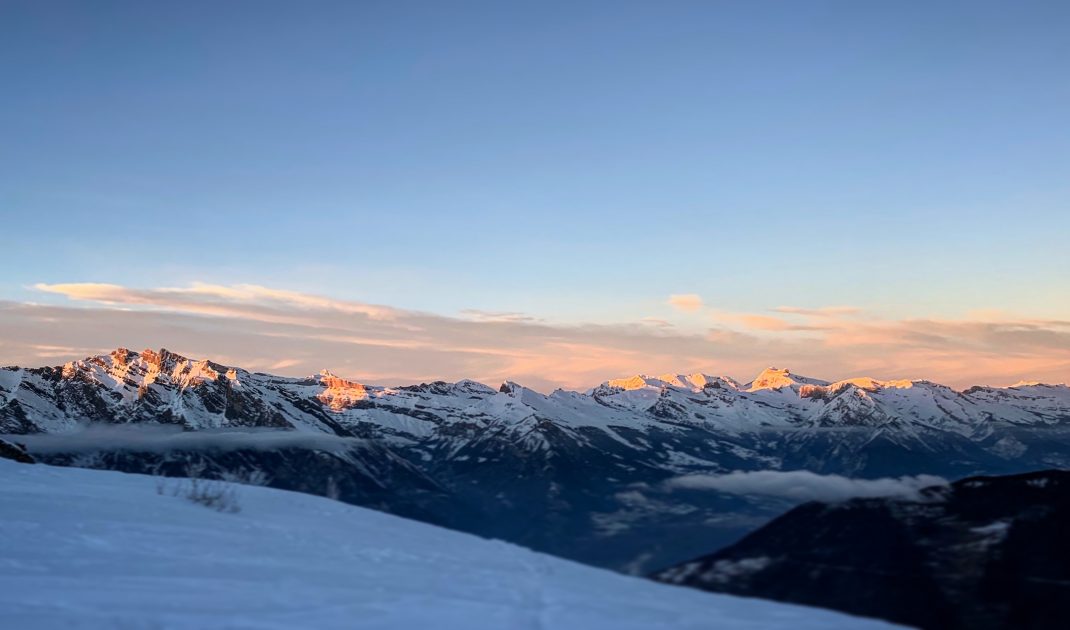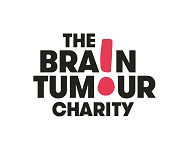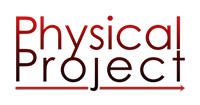Despite losing the use of his right arm in action, Martin Hewitt has just summited the world’s highest peak; Mount Everest.
Everest in the Alps lead guide Martin Hewitt, is also the founder of the Adaptive Grand Slam, a team of disabled adventurers on a mission to be the first disabled team in history to complete the notorious Explorers Grand Slam, which entails summiting the highest peak on each of the 7 continents and walking unsupported to the geographic North and South Poles.
Martin served eight years as a commissioned officer with the Parachute Regiment. He worked on operations and training exercises in the Middle East, Africa, Europe, and North America. Martin was injured whilst leading his men in combat in Afghanistan. The injuries paralysed his right arm and ended his military career.
How do you feel right now, after summiting Everest? Something that most people can only dream of!
Mixed emotions really. Gratitude for the fact that we had a bit of lady luck with the weather, which is what you always need on these expeditions. This was our second attempt actually. We attempted it the first time in 2012 and were doing really well and then the weather took it away from us. The risk of Avalanche became too high and we had to abandon the attempt. So there’s a bit of gratitude for the fact that mother nature gave us a shot this time mixed with awe and a desire to get the whole thing completed!
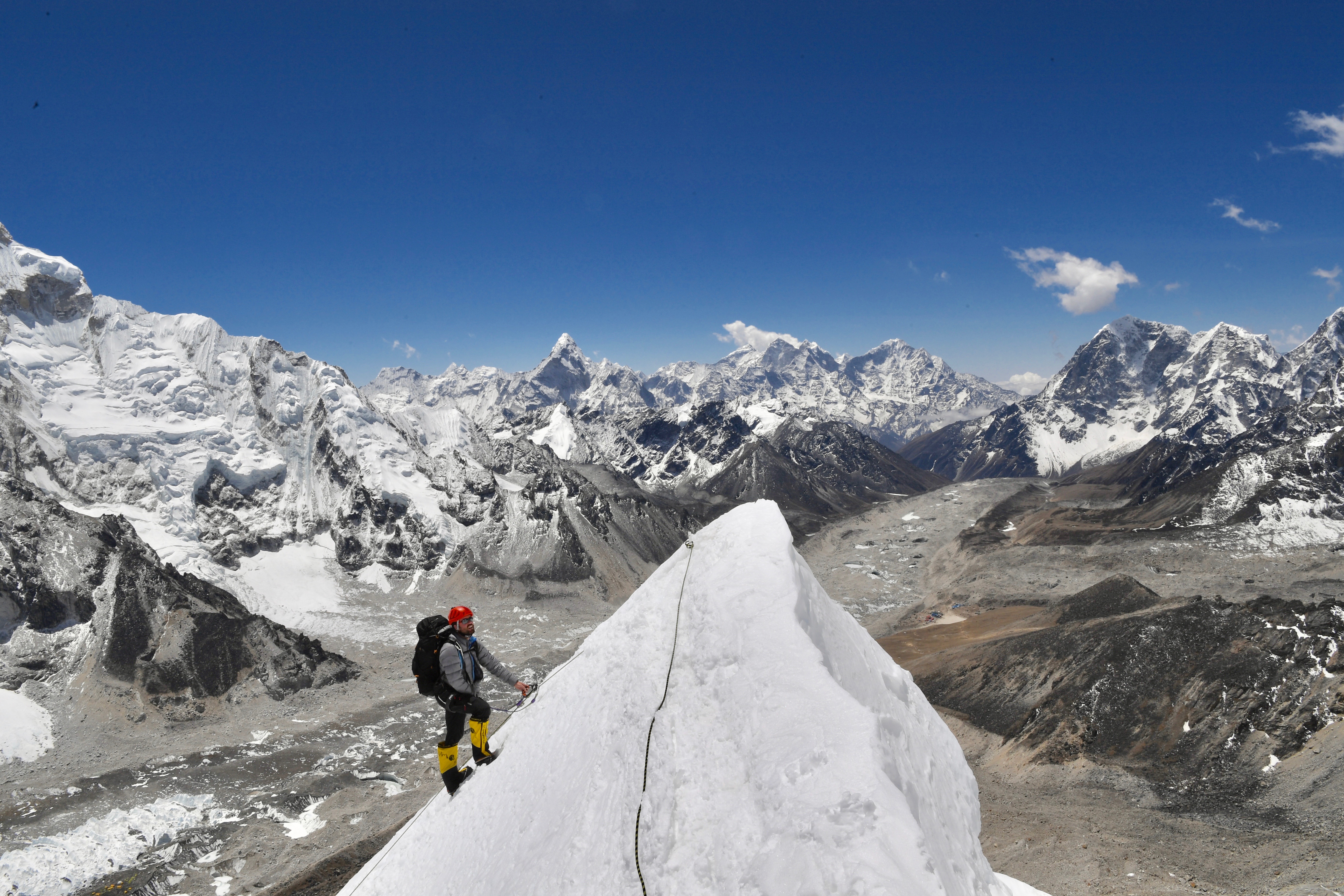
Out of the seven Summits this is probably the biggest challenge both financially and with the time commitment but I still have the South Pole to go and financially it is probably an even bigger commitment, with more time on expedition as well because of the way I want to do it, crossing Antarctica to the pole is going to be close to 1000 miles and I think the physicality of it will be harder than Everest as well. All these expeditions have their own challenges and the preparation varies enormously; Everest, Denali, the Poles… all very different.

It must have been hard having to continue without your teammate Terry Byrne?
It was! One of the biggest uncontrollable risks on Everest is Avalanches. Most teams will acclimatize by going up and down the mountain between different camps to get the body physiologically adapted to the altitude. On the south side of the mountain, that means going through an area called the Khumbu ice field, which is a moving glacial river at the base of a v-shaped valley, on which you have a lot of serax [a column of glacial ice] at the side. They are notorious for being quite unstable and avalanching into the ice fall (we try and mitigate that as much as possible by going through the ice fall at night when it’s coldest and hopefully more stable but there’s still a risk there) so what we do is we try to reduce and minimise the amount of times we have to go through that icefall by acclimatising on another mountain. This year we acclimatized on Pumori which is a 7100 m peak which you can launch to from Everest base camp.
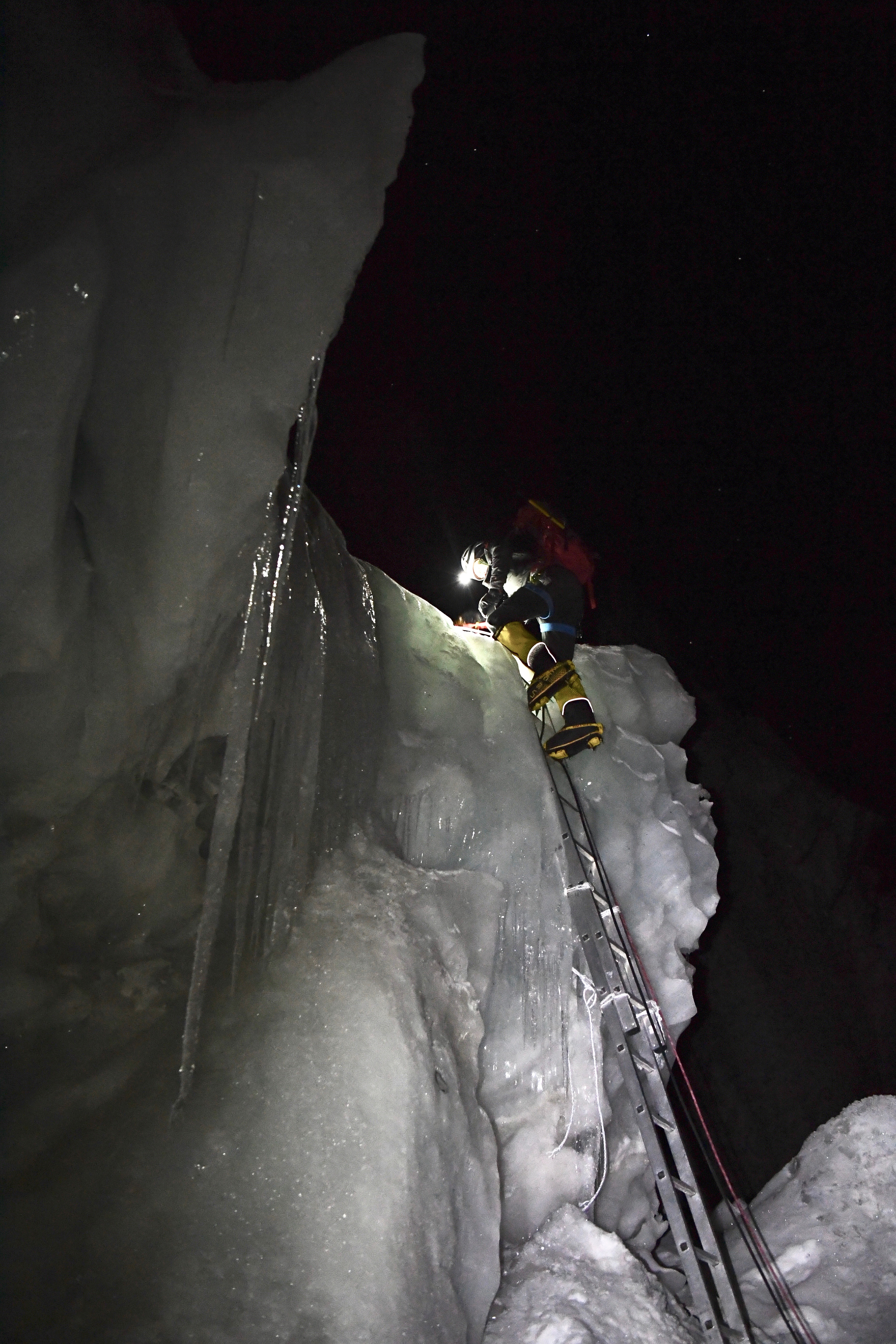
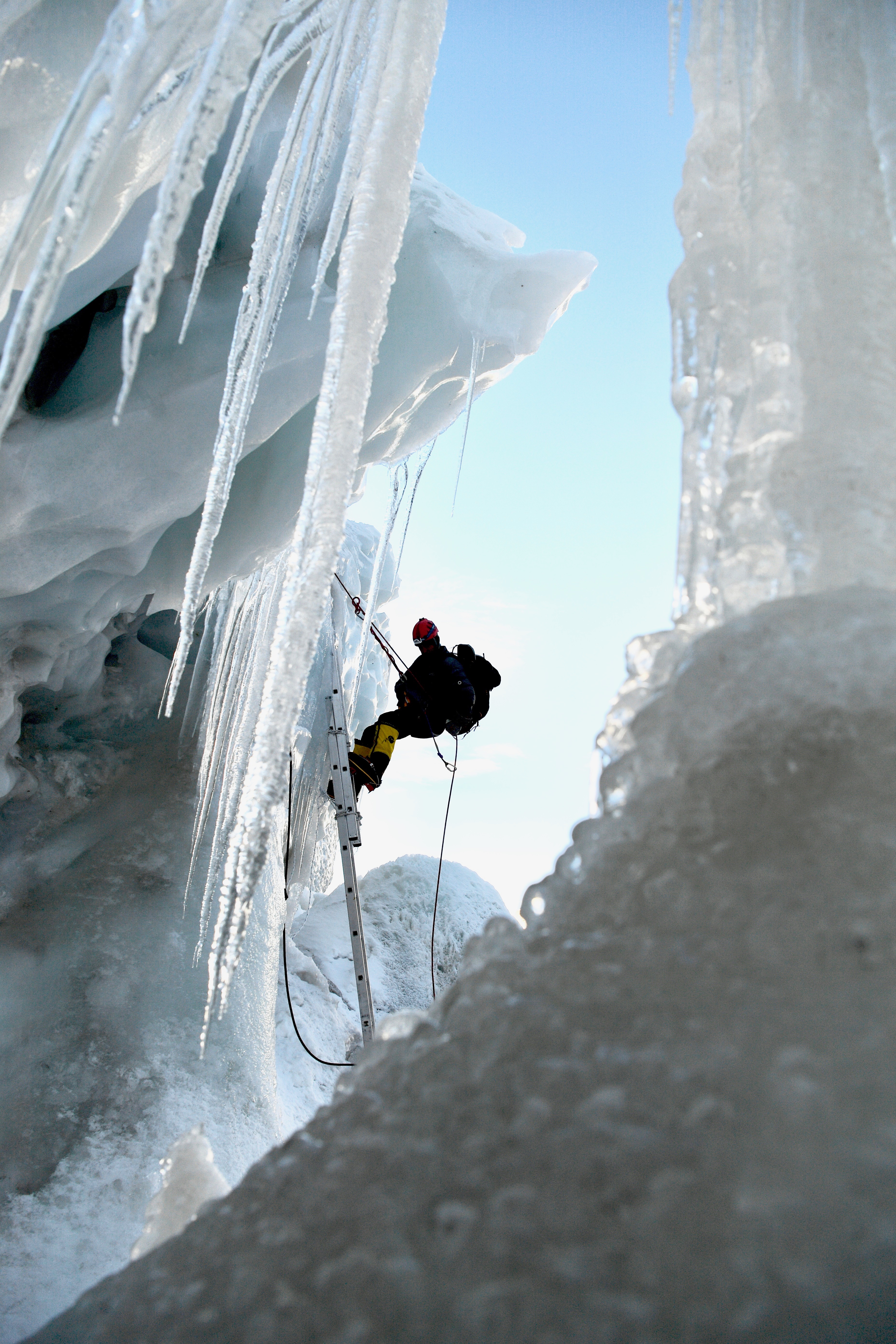
Pumori is a very difficult mountain to climb, much more technically demanding than Everest was. Unfortunately on the way down to camp 2, Terry felt something in his leg pop. It wasn’t major and he carried on going but when we got back to base camp he was in a lot of pain with it, so we spent 10 days there trying to see if it would heal. He had scans on it and everything but it wasn’t getting any better so he unfortunately had to make the decision that he wasn’t going to continue. He couldn’t even put the leg on for more than an hour at a time without it causing lots of pain.

It was a real shame, obviously the whole idea was that we would do this as a team. Teamwork is so important, especially when you’ve got disabilities and we worked really well together. Losing him was a bit of a blow to say the least and of course I was gutted for him. He was very strong and had done a lot of preparation for this and it was a real shame for him to not have a shot at summiting.
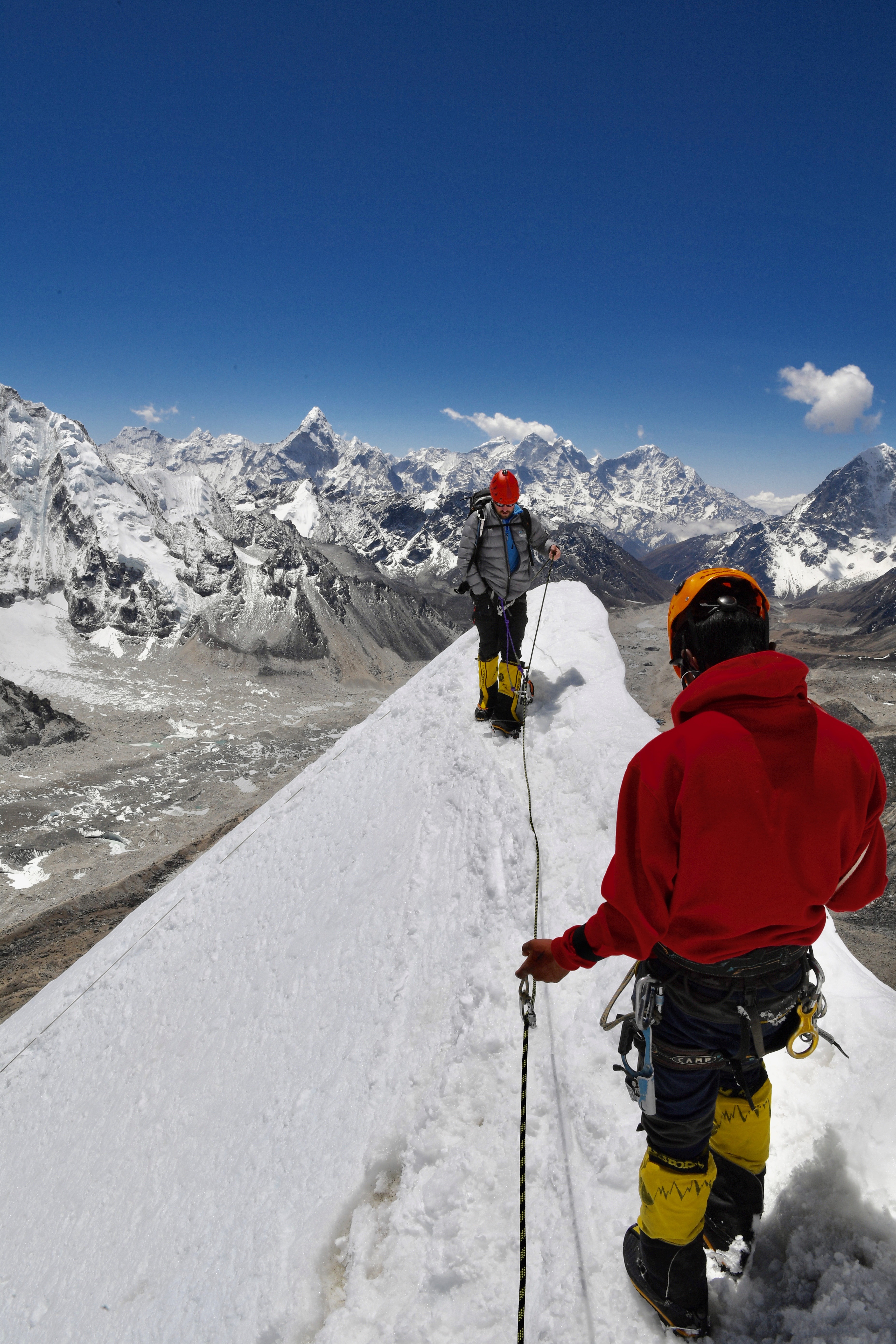
What led you to set up the AGS?
I got injured in Afghanistan when I got shot by a machine gun and the bullet went straight through the outer part of my chest and shoulder, which lead to the paralysis of my right arm [and being medically discharged from the Army]. I then got involved with a number of different organisations and a couple of service charities.
We established an adaptive sports program at Headley Court [Defence Medical Rehabilitation Centre] under which were several different sport teams in different fields and one of them was skiing. So I got involved with adaptive skiing. I then ended up on the GB team a year and a half later and then onto the World Cup team and looking to go for the Paralympics. But when I was on the pathway for that, we realised that I didn’t have a chance! I had come to the sport late and reached a bit of a talent peak. Where the Paralympics differ from other sports is that it’s all about what factor you are in and how many people in the world are competing in that factor with your particular injury. The standard for skiing is really high. You have a lot of world-class skiers who just got injured competing.

The best thing I found about the whole experience was learning that giving people a positive focus during a challenging time after a life-changing injury was a model that worked really well to maximise rehabilitation and using that as a platform to then crack on and ultimately try and find a sense of purpose again and meaningful occupation.
Having been involved in a number of different charities, I started getting approached by people with disabilities from different parts of society who had seen what we have done and were motivated to maximize their own rehabilitation or to just get back into the outdoors as they have lost confidence. What I wanted to do was create an organisation where we could facilitate opportunities for people to get involved and to take on extreme challenges and push the boundaries of what can be achieved with a disability.
I had a fair amount of experience of working in the sector and although they are all doing good stuff, it tends to be quite a fluffy area. The reason I chose the Explorers Grand Slam was to set a bit of a benchmark as something that nobody with a disability has done before and very few able-bodied people have ever done and in doing so I hope to change the perspective within the disabled community and to create a culture where disability isn’t even mentioned.


Initially the plan was to take people with me on each one of these trips we do and we’d do one of the Seven Summits a year or one of the poles until they’re all done and that was going to be it! But over time, other people got involved… Perhaps they couldn’t take on a glacier because of their injury, because of the impact it would have or because their injury was already at a level where it wasn’t safe to take on that challenge, so then I started looking at designing other events. It started with Secret Compass, who were doing an expedition down the Moa River in Sierra Leone. I put a couple of guys on that as a pilot to look at the kinds of expeditions and challenges that we could do to facilitate opportunities for people with disabilities to take part in while still pushing the boundaries of what is possible.
I started scaling it up to organise more weekend trips in the UK including hill walking, to act as a selection process to find people we could potentially take onto other things, and then we started taking non disabled clients on the trips as well because there are a lot of people that want the added value of when they’re struggling, it inspires them to have an amputee next to them. It puts people’s challenges in their day-to-day lives into perspective. Team members share stories and actually they get a heck of a lot out of it!
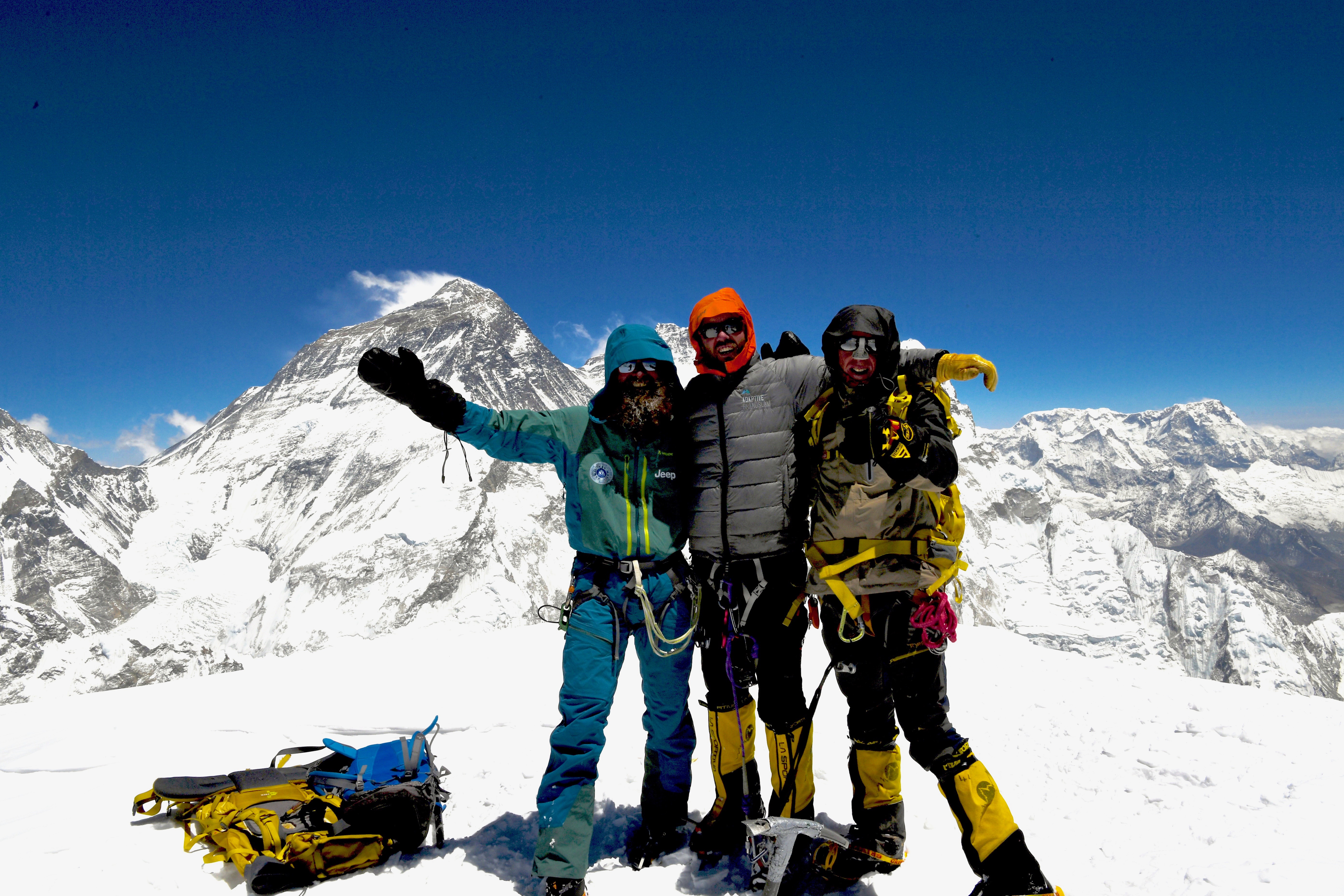
We also have a charitable foundation that sits alongside the organisation which is a grant making charity so anyone who has a registered disability can apply for a grant for whatever they need and we then write a cheque for them to get the equipment they need to take part in a sport or cover the cost of doing an expedition.
We’ve just done a grant for a girl who’s blind to take horse riding lessons because it helps with her balance and private tuition because she’s struggling in school.
The whole idea is that we get members of the disabled community out there pushing the boundaries and in the process raising money to help other members of the disabled community. It’s a peer-to-peer support organisation.
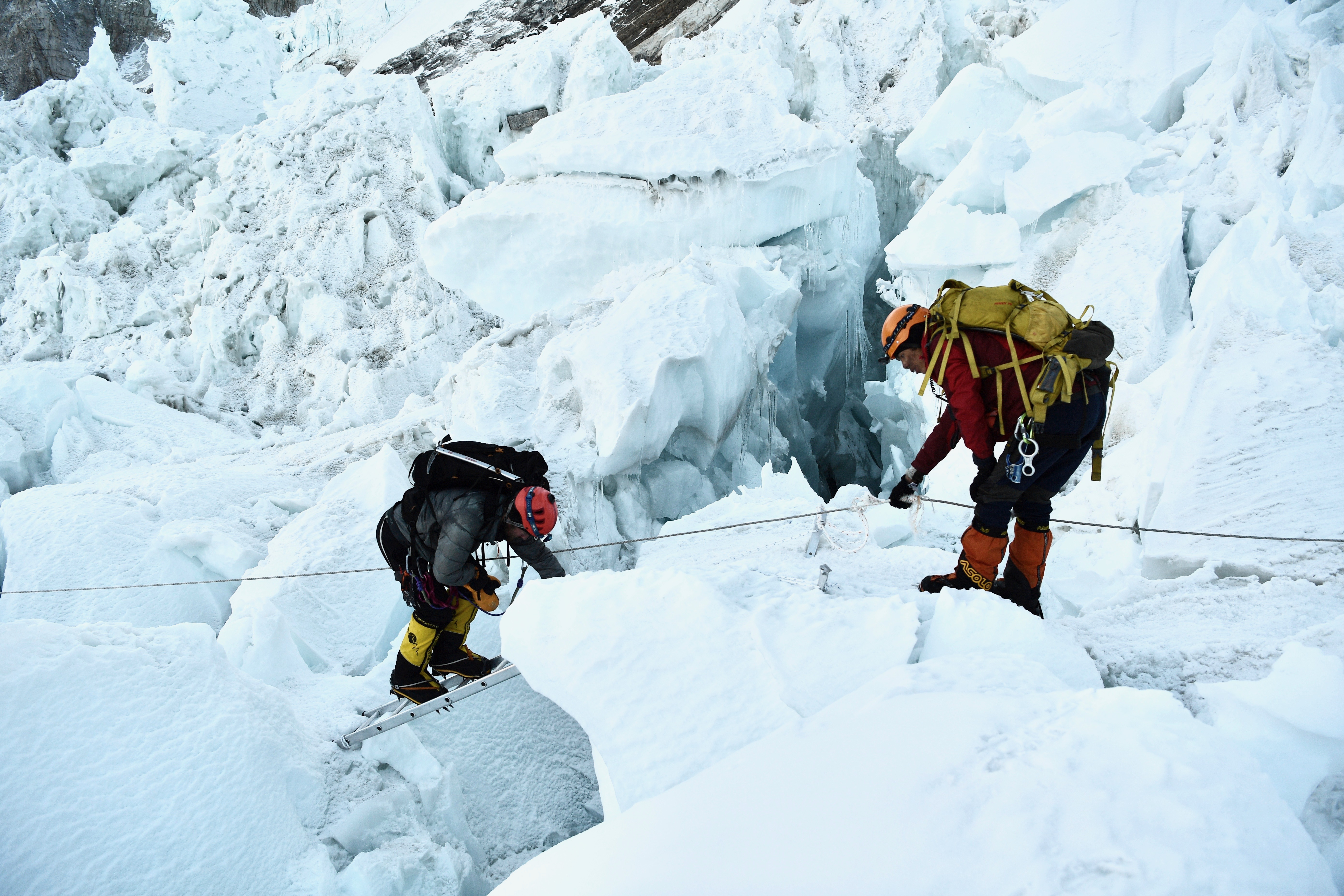
Were you always into adventures and expeditions or was it being in the military that gave you a taste for it?
I didn’t do any major expeditions when I was younger but did a lot of mountaineering when I was at university. I was in the reserves and the Army Officer Training Corps which is where I first met Bodders [Tom Bodkin of Secret Compass] and he and I used to be involved in this military skills competition which, like a lot of military things, is where you don’t get enough sleep and you have to do a lot of distance.
In order to do well in the competition, I thought I’d do some more navigation training. I enjoyed being in the hills, so I started doing a few qualification courses, rock climbing courses, navigation and skills courses, in the end I became a joint services mountaineering expedition leader and I started taking small groups of 6 or 7 away in Europe on mountain expeditions. I got my ski instructor qualification when I was at university as well, all with a view to then using those to provide opportunities for soldiers to enjoy being outdoors. Although when the time came we were in Afghanistan, not a lot of time for anything else!
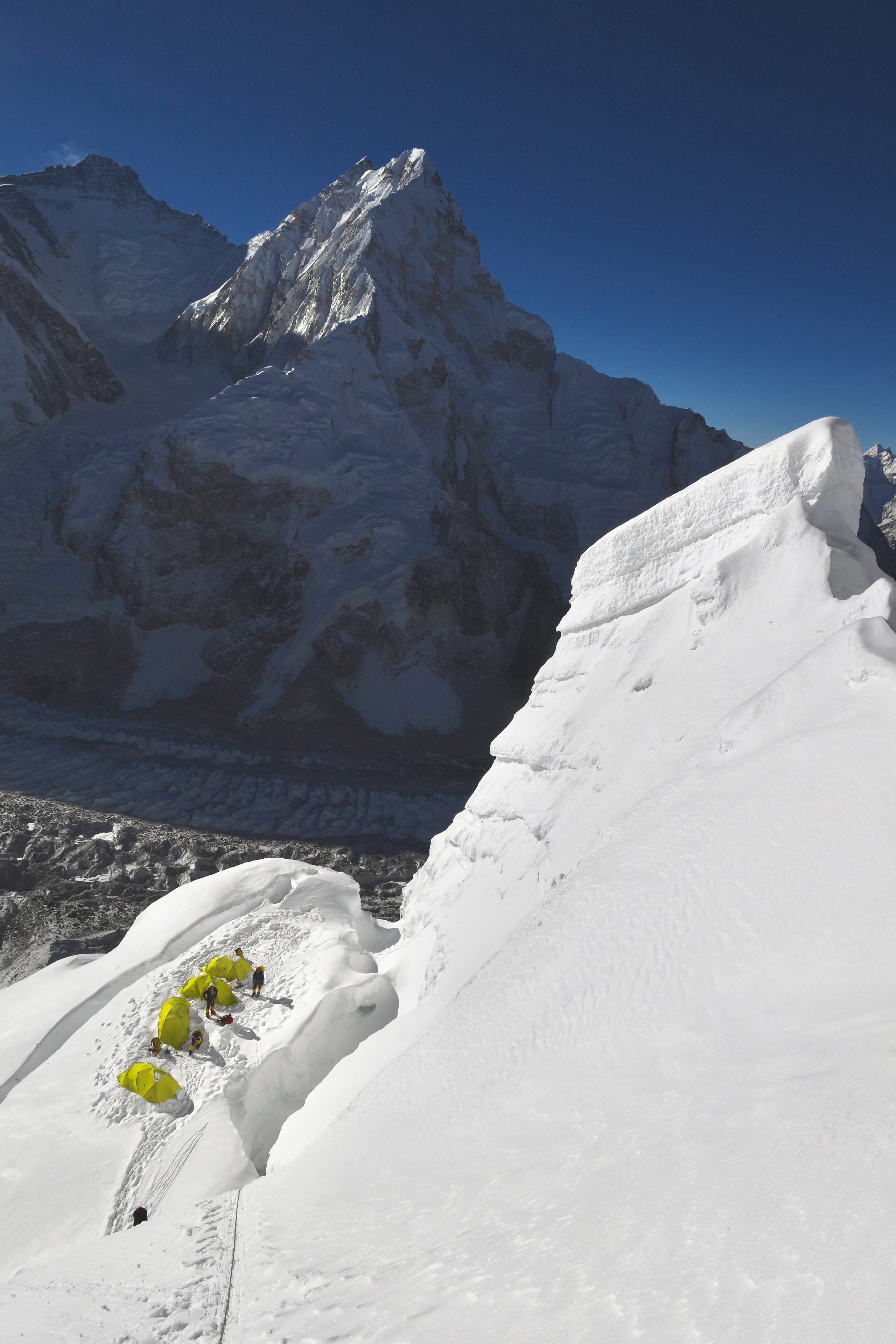
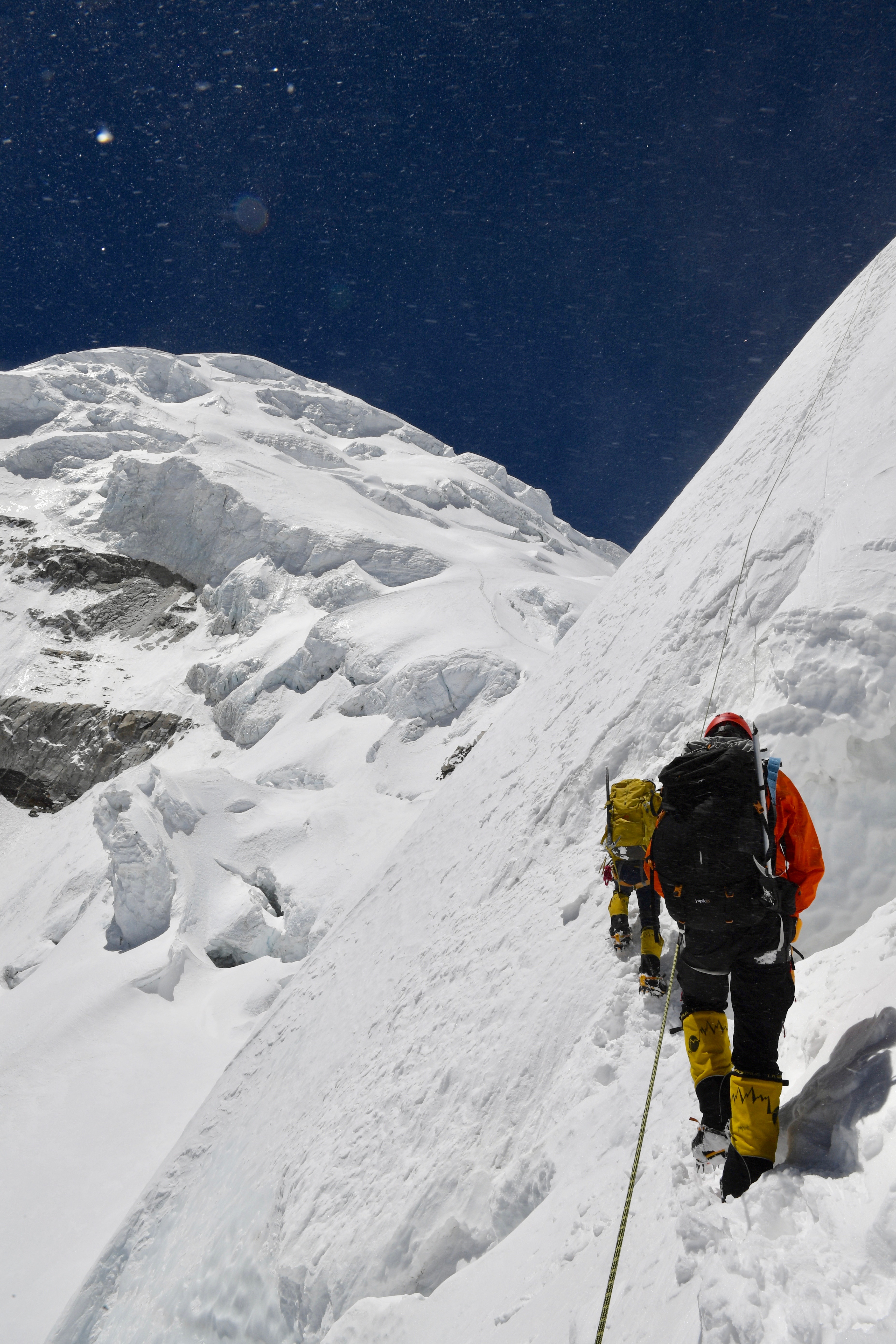
Did you always know that you wanted to join the Army?
Yeah from a very early age I decided that that’s what I wanted to do. I joined the cadets and I did a lot of sports but not to any performance level, jack of all trades master of none! In academia I enjoyed business and did a 4-year degree with a year in industry, just so I could confirm that the military was what I wanted… Of all the things that I did when I was at school and college and university, I got the most enjoyment out of my time in the Reserves and I seemed to excel at it as well.
Soldiering isn’t easy. There are certain behaviour traits that you need to have to excel as a soldier. You have to be able to work as part of a team under pressure. You have to behave in a certain way as a leader in the military, you have to be prepared to take ownership and responsibility and do that under significant levels of duress. When I started doing that I realised I wasn’t bad at it, in fact I was quite good at it! A lot of people were quitting in the selection process, not having a desire to carry on after not having slept for a few days and were physically drained but I seemed to be able to crack on.
By the time I got into the Parachute Regiment I had done a lot in different parts of the reserves to work on the skills that you need to succeed in those kind of environments. I’d committed to it and I was half decent at it and although this sounds weird to people that haven’t served, I actually wanted to go to war. I wanted to do the job for real. When 9/11 happened, I was at university. I was on my year in industry at the time and when the twin towers were hit, I knew it was going to be a game changer and we would be going to war.
The British Army up until that point had been on a lot of peace support operations but I knew then we would be taking direct action on the people that were responsible for that. It was a pivotal moment for me.
It’s the sense of purpose and identity you get from it. I’ve spent 10 years in the commercial sector now including the charitable sector, and there are not that many people that I’ve come across that do genuinely have a sense of purpose and a sense of identity in their work. Now in the army and in the Parachute Regiment in particular you do genuinely have a sense of purpose and a sense of identity around what you do and the people, love them or hate them, are characters that makes getting up every morning and doing what you do a lot more interesting.
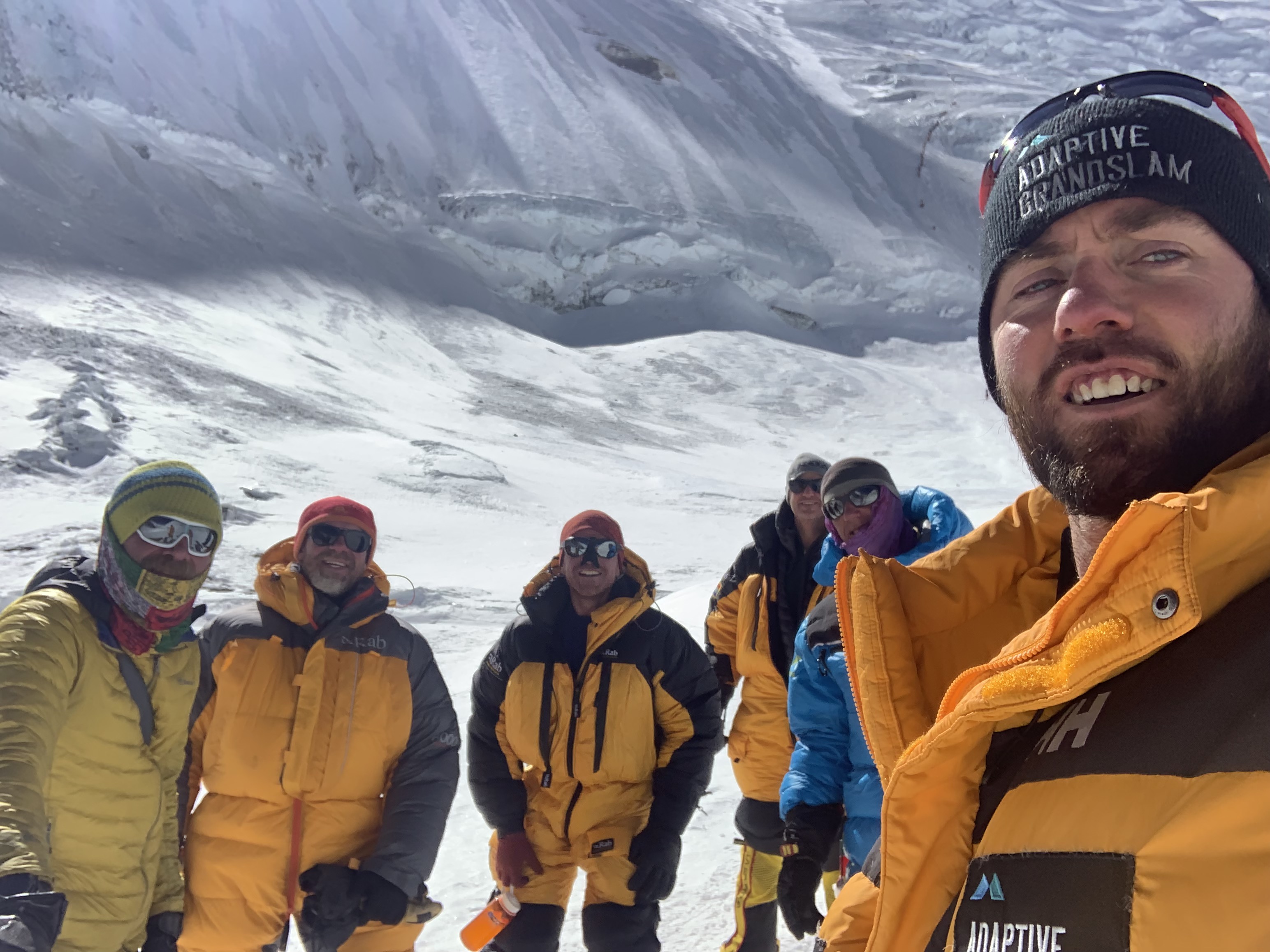
Having the AGS guys leading on Everest in the Alps is a huge inspiration for our team members. What is your role and how do you go about getting the best out of them?
Our role is twofold. First of all we provide safety and advice for all of the team members. We have two levels of guides; the first are qualified mountain guides, like Harry Taylor who is IFMGA qualified (the highest level of qualification you can get in the mountains). He is the AGS lead guide on Everest in the Alps and then we have guide levels below that, they provide the safety and technical support and then we have AGS beneficiaries so team members that we’ve taken on Expeditions. Some of them are qualified as guides but they are there to assist the technical guide.
The group dynamic is really important to get right on a physical challenge in a harsh environment, which can potentially kill you if you get it wrong. You’ve got to be able to have the resource in place to deal with all situations in the mountains. We have two guides per team in case we need to split the teams up for any reason.
One of the benefits that the team members seem to respond well to, is people seeing other members of the team that have been through significant life-changing injuries and not let it destroy them. They demonstrate resilience and they demonstrate success post injury and that seems to drive the Everest in The Alps team members on when under physical and mental duress… which this challenge definitely puts people under!
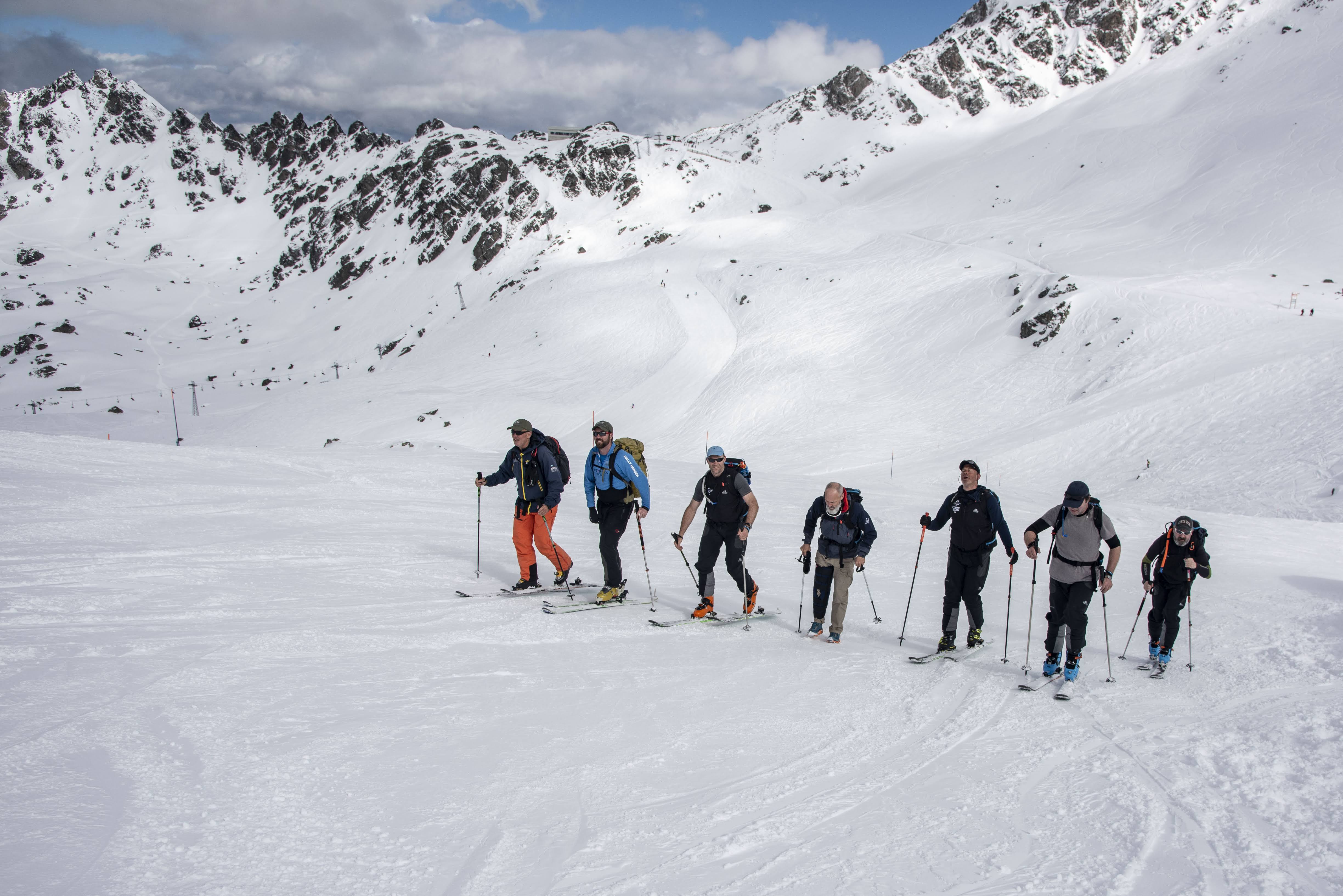
How do you think EIA compares to other ‘challenges’ Is it a real test for the average person?
Yes! But it’s all down to what preparation you do. What one person perceives to be a challenge is different for another. What is challenging about this event particularly is the nature of ski touring. We have a massive recreational ski community in the UK but there’s not that many within that community that do ski touring and those that do tend to minimise the amount of time spent on skins. They just use it to get access to the fresh powder they want to ski down! This event is all about putting skins on and walking up mountains, so the biggest challenge here is that people aren’t necessarily used to that physicality.
The motion when your touring is different to other things, it’s not like doing a marathon or a 10k run or an obstacle course. Like all these endurance challenges they all require you to move in a certain way and to build muscular endurance in a certain way. What presents quite a big challenge to people on this event is most people can’t access for example glaciers to be able to train on, so they have to train doing different things like doing gym work on a stepper a treadmill or getting out to the hills in the UK. But you haven’t got the same kind of terrain and that’s something that we find challenging every year because the biggest vertical ascent you can find in the United Kingdom is about 650m and there’s not that many mountains in the UK where you can get continuous ascent without hitting a plateau or a decent.
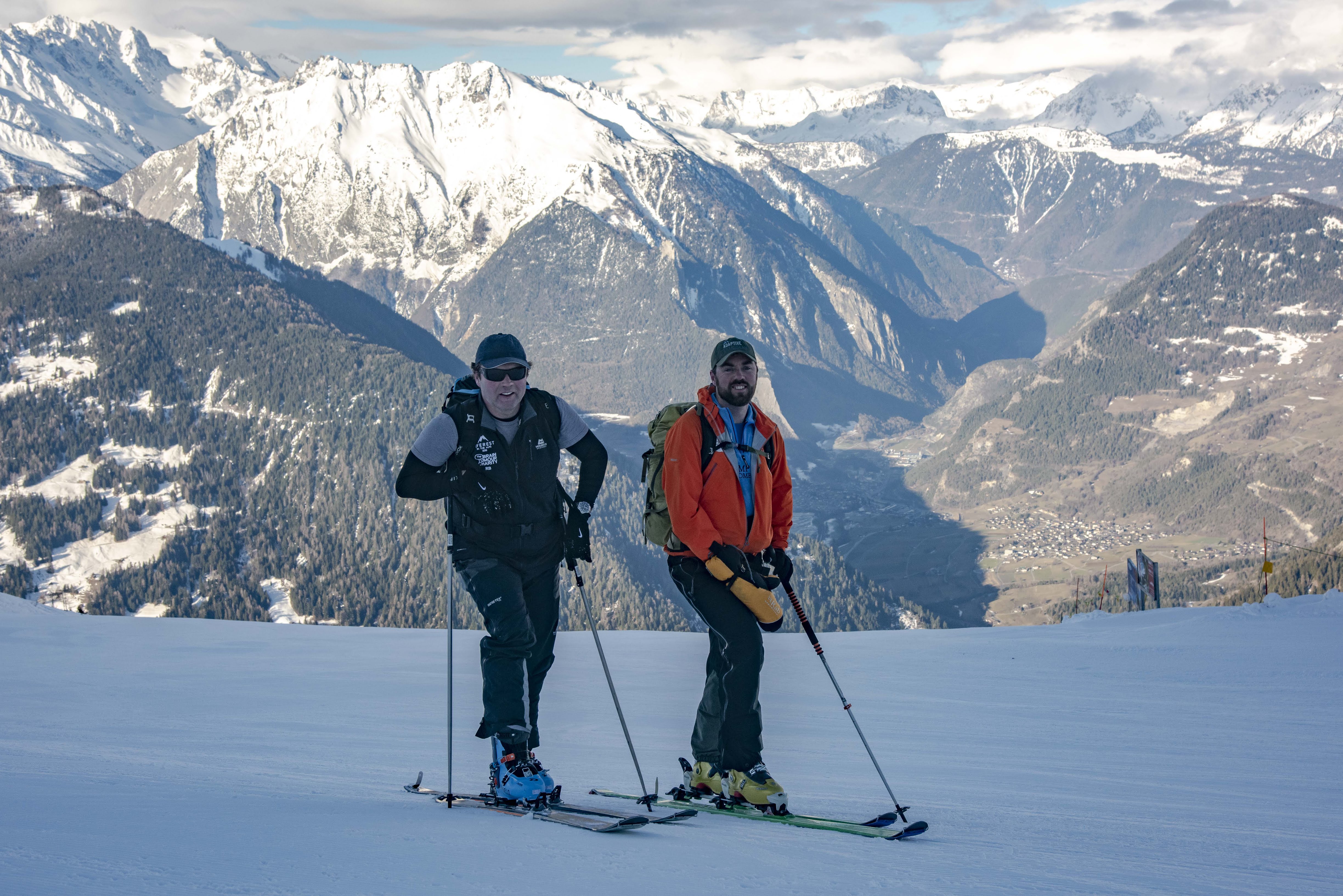
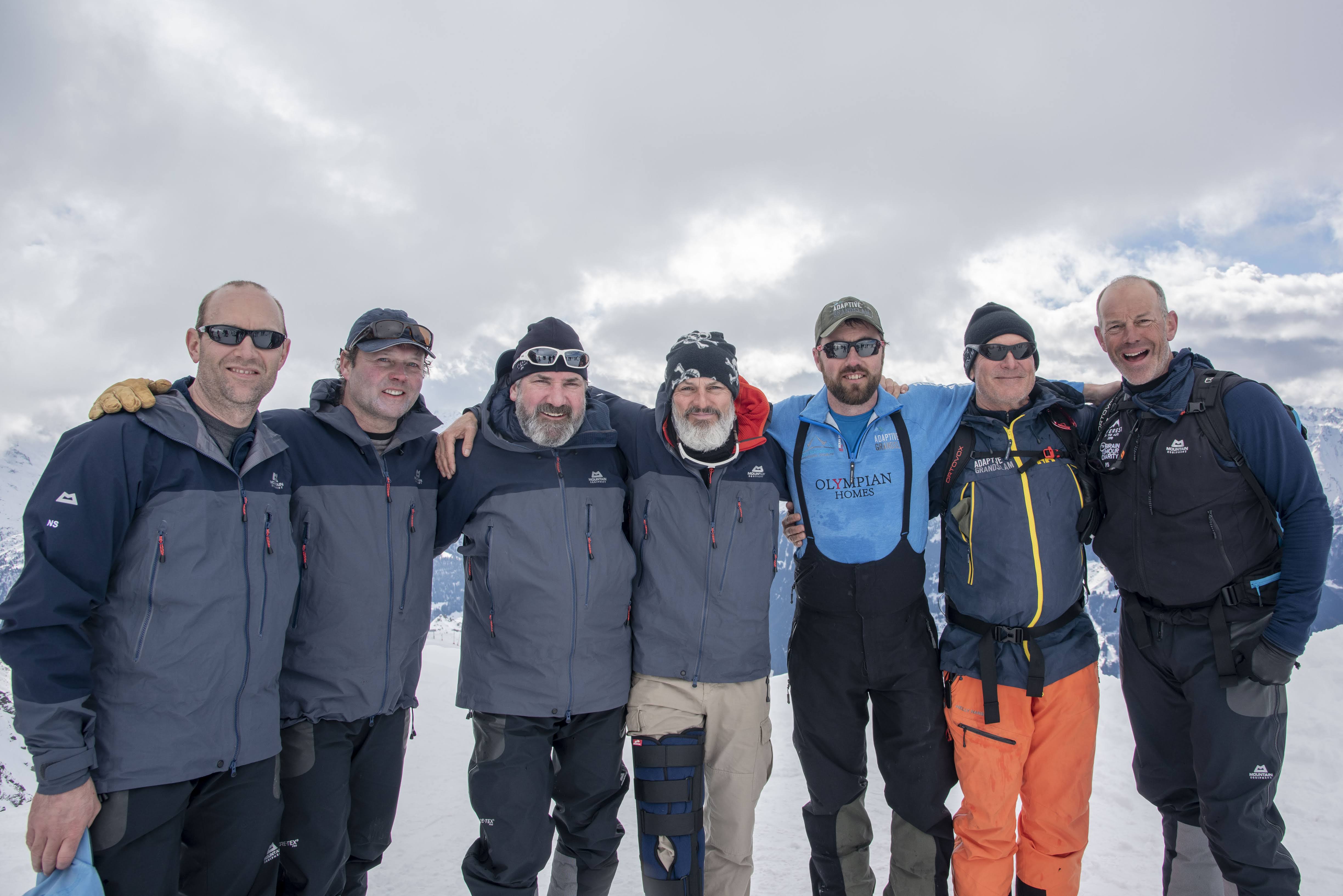
With Everest in the Alps you’re going to be climbing continuously on every session that we do at least 250m of assent up to over 1000 metres of ascent in one go and you have to get your body physically used to doing that, with weight on, skis! That’s a very different experience to what most people tend to do in their training. Also, your body’s often physically compensating for a lack of technique and that puts you under a greater level of duress.
The days are long too. I think the quickest any teams done the ascent needed in a day is 7 or 8 hours, some teams are doing 12 hour days, it depends on the team members as you always go at the pace of the slowest person, because this event is about the team. It’s hard to train for if you have a full time job so that is what I think makes this challenge fairly unique; the nature of ski touring and the lack of opportunity that people normally get in the UK to be able to prepare for that, combined with it being an endurance event that requires you to get over 8448 m of cumulative ascent over 4 days, which means you’re going to be on your feet for a long time. Tough challenge!
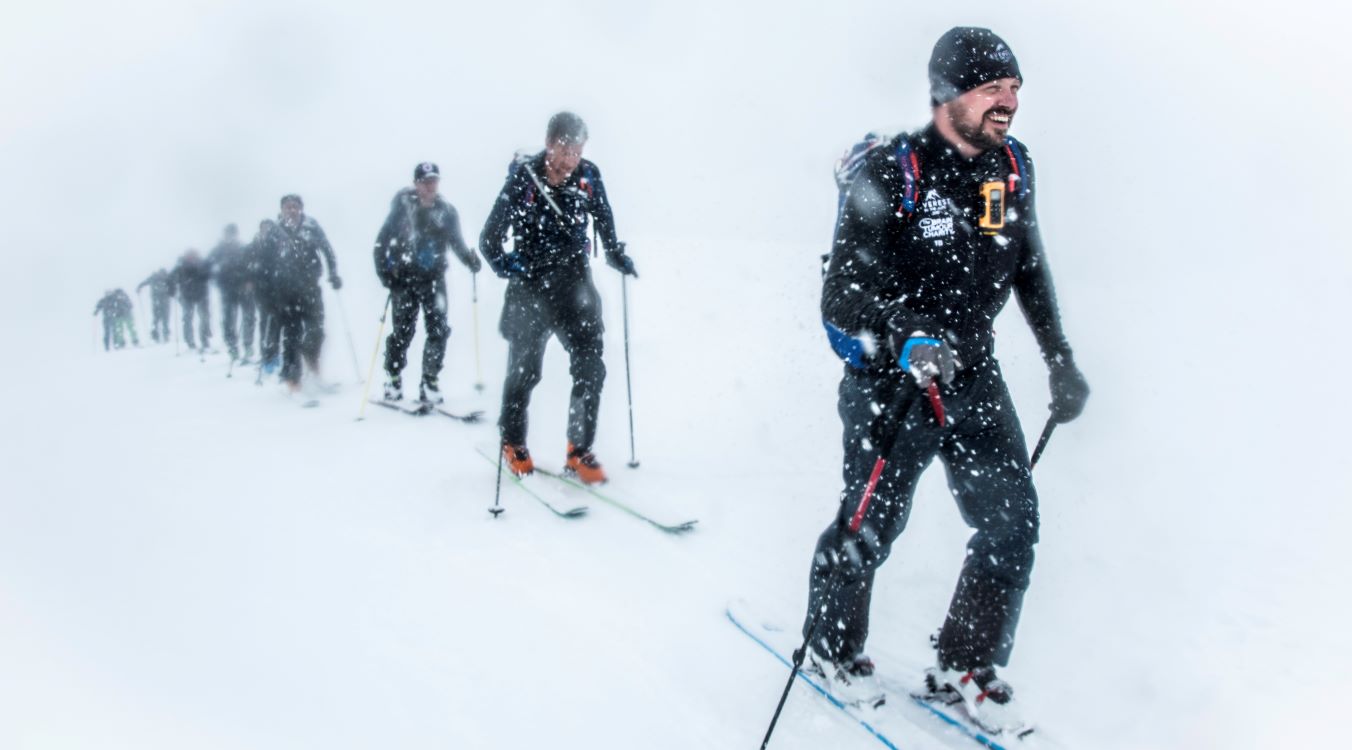
What’s next for you? How close are you to achieving the ‘Grand Slam’
We have the Carstensz Pyramid early next year in spring 2020, then the South Pole and Vinson massif (which is the highest mountain in Antarctica). We’ll have two teams going to the South Pole because none of the amputees I’ve got or have ever come across would be able to do the full distance. It’s too hard on the stumps, if you get a pressure sore or a blister on a stump then it’s game over, whereas if you get it on your foot, you just put a compeed on and crack on. You can’t do that on a stump, the pains too much and it causes too many second-order effects on the stump itself.
So we have to get the balance right between pushing the distance as far as we can, without guaranteeing problems for amputees. We’ll have two teams; one that will join me for the continental distance and then one team flying out and probably doing about 250 miles and then we’ll all go as one big team with clients as well (as I have a few clients that want to come on this trip), and fly to the glacier and then onto the base of Vinson Massif to climb Mount Vinson.That will be winter 2020 until 2021, as we do it in their summer which is our winter, so I’ll be away from about mid-november until February. It’s going to be a big un!
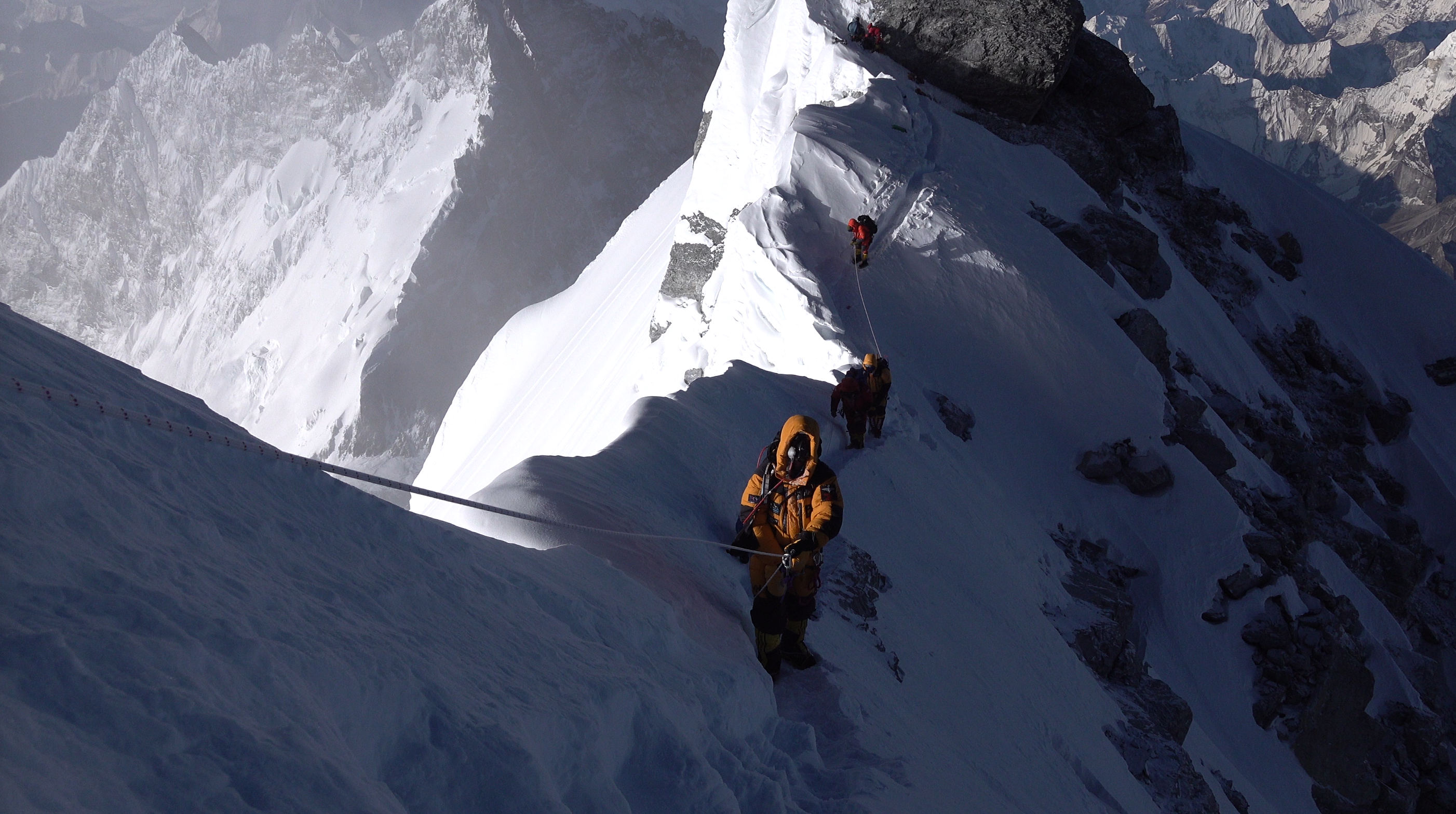
Although I’ll have my Grand Slam, I have several people that will want to continue on with their Grand Slam, so I will try and make it happen for them. Now we have a model that works I will try and keep it going and scale it up; quite a few of the boys and girls that have done trips with me want to continue on with their Adaptive Grand Slam. Terry definitely wants to go back and do Everest again so hopefully we can make it happen for him!
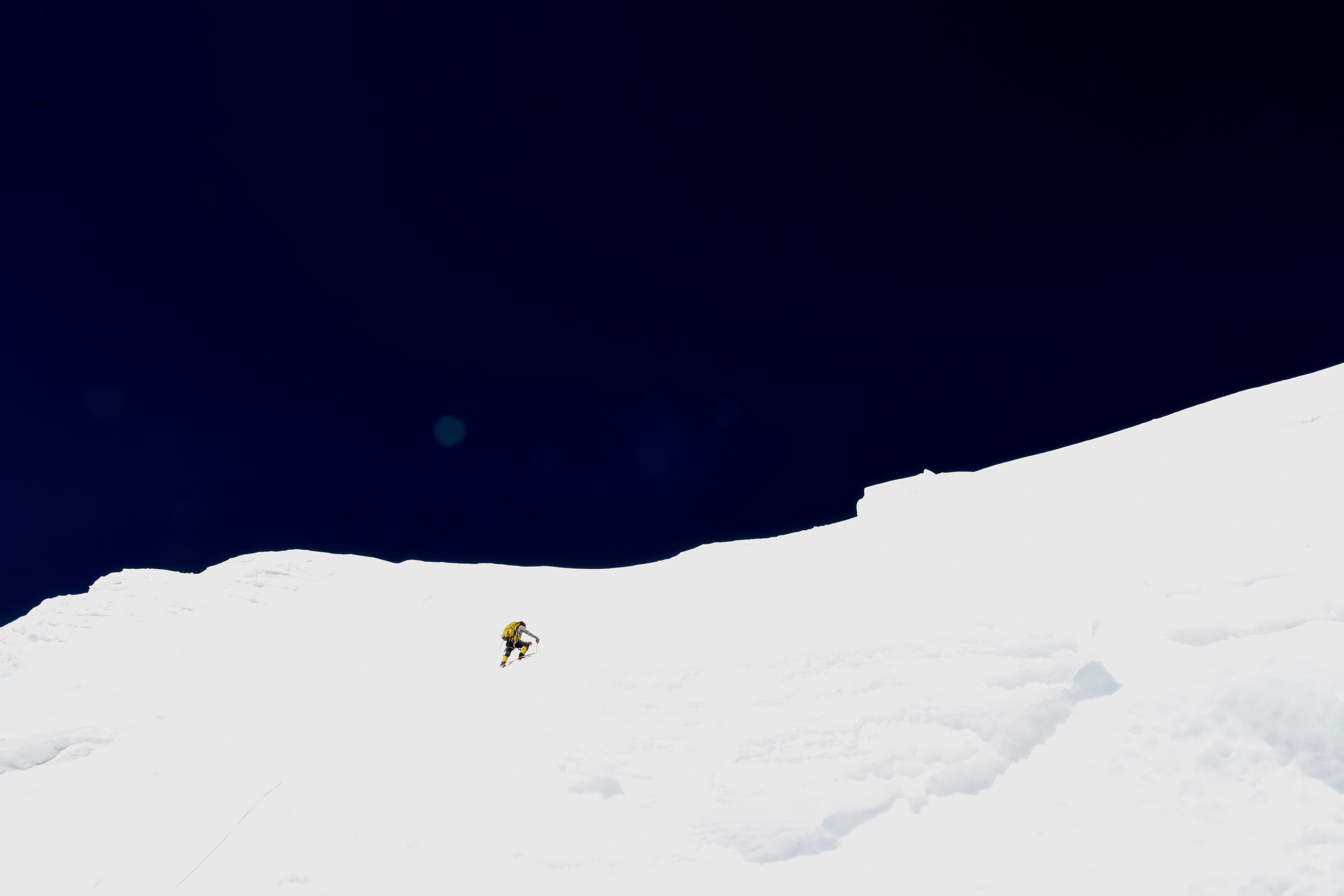
Email: info@adaptivegrandslam.com
